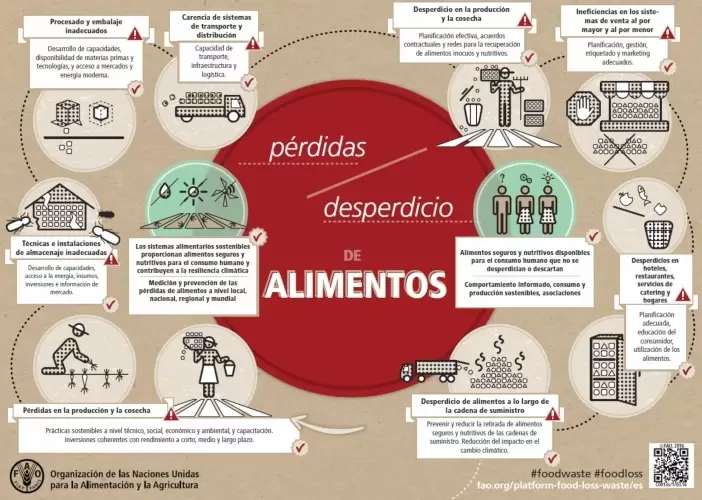
Views: 44
How logistics control and traceability can reduce waste, poverty and hunger, and open business opportunities.
Minapim by Hernan Valenzuela: To ensure the food supply of all people in the future, IIoT AI , and IoT, may be are an appropriate technological approach.
The global increase in population implies the need for more food year after year. According to the United Nations (UN), global agricultural production must increase by 70% by 2050, to be able to feed all inhabitants of the planet. This challenge increases considering that the land for cultivation decreases in the same proportion. Despite efforts to combat food shortages in recent years, there is an increase in the number of hungry people, according to the UN.
The real drama is the result of relationship, enjoyment and waste of food.
According to FAO, 45% of fruits, 45% of roots and tubers, 35% of fish, 30% of cereals, 22% of vegetables, 20% of meat and 20% of dairy products are lost worldwide. In total 1.3 billion tons of food,
No region of the globe escapes loss or waste, according to Fao, “Food loss” refers to foods that spill, spoil, incur an abnormal quality reduction, or get lost before reaching the consumer. Food waste typically, but not exclusively, occurs at the retail and consumption stages in the food value chain. Food losses occur at the production, post-harvest and processing stages in the food supply chain, they are called “food waste”, which refers to retailers and consumers.
Food Waste waste or loss is measured only for products intended for human consumption, excluding feed and parts of inedible products.
Current food production in some countries could satisfy the hunger of the malnourished if there were no logistical and storage difficulties that lead to waste. Considering some regions where land is lacking or unsuitable for cultivation, and inefficient logistics chains, plus the impact of climate change, the future will be more complicated.
Within this scenario, there are numerous possibilities of applying the technologies of IIOT and AI in the food chain, in order to reduce losses by 50% by 2030.
With the internet of things against hunger
The Internet of Things (IoT) of Artificial and Industrial Intelligence (IIoT), and AI, is an important tool for monitoring data collection and making decisions to avoid food waste.
Several technologies available today, could together cover all stages of the process allowing monitoring and control: planting, transportation collection, industrial processing, retail and end consumer.
Real-time data collection will help for decisions for the best use of crop and results.
How is it possible today to implement and innovate the supply chain
- Plantation monitoring of soil such as nutrients, water, temperature and pests.
- Food storage conditions in silos such as temperature, shelf life and quantity
- Optimize existing distribution logistics by incorporating the technologies available for tracking in land and sea transportation.
- Inventory monitoring in supermarket warehouses, freezers and store shelves.
- Finally in the refrigerator or cabinet of the end consumer. The end consumer will avoid waste aided by the information provided by the refrigerator or its shelf, which will inform him as soon as any product is about to finish.
- Sharing information (via IOT) about more valuable food for consumption from hotels, restaurants and other commercial waste disposal activities can distribute goods to local charities and other social programs to avoid disposal.
In the logistics steps mentioned here, there are all the appropriate technological conditions for a harmonious process and treatment of food, some integrations and connections are missing where IIOT and AI will play an important role.
This niche market still needs investment, considering that each type of food demands several monitoring variables. Small solutions can bring big results, in some cases the opportunity is for small businesses.
Source : FAO
Related article: The sacred cow and the environment

Leave a Reply